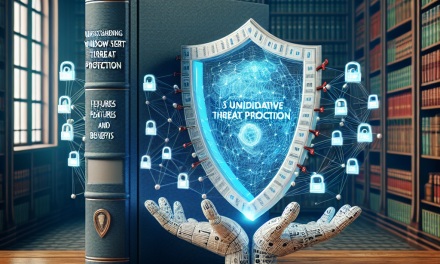Introduction
In today’s digital landscape, the importance of robust security measures cannot be overstated. Cyber threats are increasingly sophisticated, and organizations must adopt comprehensive strategies to protect their infrastructure. One effective approach is the integration of Security Information and Event Management (SIEM) systems with Windows Server environments. In this article, we will explore how SIEM integration can enhance security for Windows Server, outlining key benefits, best practices, and practical steps for implementation.
What is SIEM?
Security Information and Event Management (SIEM) is a crucial technology that combines security information management (SIM) and security event management (SEM). SIEM systems gather and analyze security data from various sources across an organization’s entire network, providing real-time analysis of security alerts generated by applications and network hardware.
Why Integrate SIEM with Windows Server?
-
Centralized Log Management:
Windows Servers generate vast amounts of log data, from system events to user activities. SIEM integration centralizes this log data, making it easier to monitor, analyze, and respond to security incidents. -
Real-Time Threat Detection:
By leveraging the analytical capabilities of SIEM, organizations can detect anomalies and potential threats in real-time. This enables security teams to respond swiftly to incidents before they escalate. -
Regulatory Compliance:
Many industries are bound by strict regulations regarding data security and privacy. SIEM integration helps organizations maintain compliance by providing necessary audit trails and reporting functionalities. - Informed Decision-Making:
With comprehensive visibility into the security landscape, IT teams can make proactive security decisions based on data-driven insights gathered from the SIEM system.
Best Practices for SIEM Integration with Windows Server
-
Plan and Assess:
Before initiating integration, assess your current IT landscape. Identify the critical components of your Windows Server environment and the data sources that will feed into the SIEM system. -
Choose the Right SIEM Solution:
Selecting a suitable SIEM solution is crucial. Consider factors like scalability, interoperability with existing tools, and the ability to integrate specific Windows Server logs. -
Define Security Policies:
Establish clear security policies and guidelines for log management. Define which events and logs are critical for monitoring and ensure your SIEM is configured to capture these events. -
Focus on High-Value Data Sources:
Prioritize data sources such as Active Directory, file server logs, firewall logs, and application logs. These are often rich in valuable information regarding user behavior and access patterns. -
Implement Appropriate Alerting:
Configure your SIEM solution to generate alerts based on predefined thresholds and patterns of suspicious activity. Avoid overloading your team with alerts by fine-tuning what constitutes a significant security threat. -
Regularly Update and Maintain:
Cyber threats evolve continuously; hence, keeping your SIEM integration up-to-date is vital. Regularly update your SIEM software, review security policies, and adapt to emerging threats and vulnerabilities. - Conduct Training and Awareness:
Ensure your IT staff and security teams are trained on the SIEM tool and understand how to analyze and respond to alerts effectively. Awareness of security best practices is equally essential for all employees.
Steps for Implementing SIEM Integration in Windows Server
-
Install SIEM Agent:
Begin by installing the SIEM agent on your Windows Server systems. This agent will collect log data and forward it to the SIEM platform for analysis. -
Configure Log Sources:
In the SIEM tool, configure log sources to ensure you’re collecting relevant data from your Windows Server environment. This may include security logs, system logs, application logs, and more. -
Create Dashboards and Reports:
Leverage the SIEM’s reporting capabilities to create dashboards that provide visibility into key security metrics and compliance status. Regularly review these dashboards with your security team. - Continuous Monitoring and Improvement:
Establish a routine for continuous monitoring and improvement of your SIEM integration. Regularly review detection rules, perform threat hunting exercises, and assess the effectiveness of your security posture.
Conclusion
Integrating a SIEM solution with Windows Server environments is a strategic move for enhancing security. By centralizing log management, enabling real-time threat detection, and fostering compliance, organizations can significantly bolster their defenses against cyber threats. Following best practices and implementing comprehensive strategies will ensure that your organization is well-equipped to mitigate risks effectively. As cyber threats evolve, so too must our security strategies, and SIEM integration offers a powerful tool in this ongoing battle for security.
For more insights on enhancing your security posture, follow WafaTech Blogs to stay updated on the latest in technology and security practices.





